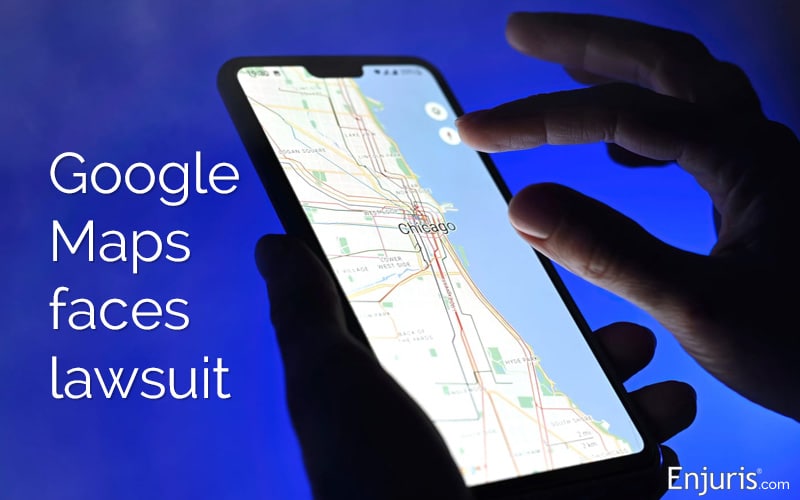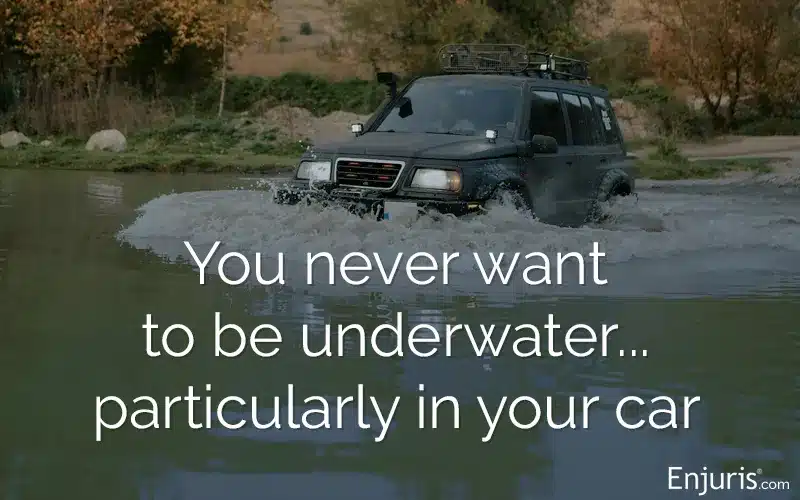
Google Maps failed to update navigation to account for broken bridge
47-year-old Navy veteran Phil Paxson was cleaning up from a party he and his wife, Alicia, threw for their daughter’s ninth birthday. Alicia and newly minted nine-year-old Amelia had gone home earlier, and they expected Phil to join them at home later that night.
But he never came home.
Instead, Paxson had driven off the unguarded edge of a bridge and his car crashed 20 feet below.
The Paxson family files lawsuit against Google
The Paxsons had recently moved to North Carolina from Florida and they weren’t completely familiar with the area at the time of the accident. Though they lived not far from where the party was held, Paxson was using Google Maps to navigate his way home.
According to their lawsuit, Google Maps directed Paxson to drive over Snow Creek Bridge in Hickory, N.C. to get home. What he didn’t know from the map app was that a section of the bridge had collapsed in 2013 and was not repaired.
Alicia took a different route home and did not pass the bridge. But the broken bridge was unbarricaded and in the dark appeared to be a large pothole; there was nothing to warn an approaching motorist that it was a broken bridge.
How was Google Maps negligent?
If the bridge had broken on the night that Paxson crashed into the water below, Google Maps would not have been negligent. It would be unreasonable to assume that a mapping app could “know” of a hazard in real time.
But that’s not what happened. The lawsuit claims that Google had been notified of the hazardous condition several times and did not update its mapping software. It further asserts that two years prior to the accident, a local resident notified Google on two occasions that the bridge was damaged. Google acknowledged the comments but took no action.
One month after Paxson’s October 2022 death, Google was again notified about the hazard. As of April 2023, the map still showed that the road was passable. Today, concrete barriers that were installed by local residents block the road where the crash occurred.
Other parties to the lawsuit
Alicia Paxson and family have filed the lawsuit against Google; its parent company, Alphabet; various private property management companies; and an individual business owner. The lawsuit claims that they were responsible for the bridge and adjoining land being “chronically neglected.”
The bridge was not maintained by a government agency; it was on a private road and its original development company no longer exists. The county and North Carolina Department of Transportation say they do not have the authority to repair or maintain it.
The lawsuit claims that the property owners failed to repair the bridge or provide sufficient lights or signs to prevent drivers from crashing into the creek below.
The family seeks compensatory and punitive damages.
Similar lawsuit by injured pedestrian
Plaintiff Lauren Rosenberg was walking on a rural highway with heavy traffic and no sidewalks when she was struck by a car more than 10 years ago.
Although she filed a lawsuit against the driver of the car, Rosenberg also sued Google in 2011. She claimed that its directions were negligent and failed to warn that the highway wasn’t suitable for pedestrians.
However, in Rosenberg’s case, the court found that Google did not owe the plaintiff a duty that met the criteria for negligence. Although there have been lawsuits where a service provider was found liable for negligently providing services to customers, the court held that Google’s duty to Rosenberg was minimal because of its role as a publisher or information provider that “publishes information to the general public.”
The court also found that, “Google was not required to anticipate that a user of the Google Maps service would cross the road without looking for cars . . . and that, absent negligence on the user’s part, an injury while crossing the road would be unlikely.”
In other words, Google did not have a duty to warn against a harm that would be likely to happen because of the plaintiff’s negligence or breach of her own duty.
The court also held that it would be an unreasonable burden to expect Google to warn about all foreseeable risks, including roads in disrepair, lack of lighting, and others. One concern expressed by the court was that if it were to rule in the plaintiff’s favor, then it could open the floodgates for similar cases that would render Google less useful as a result because of concern about litigation.
Who is Liable for the Deaths from the
Key Bridge Collapse?
The Key Bridge disaster highlights how dangerous it is if your vehicle is submerged. Here’s what to know.

